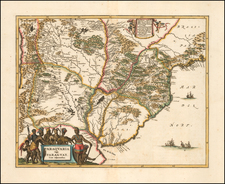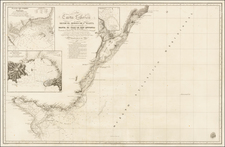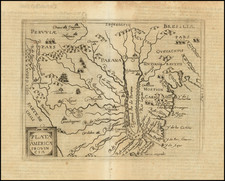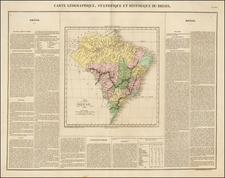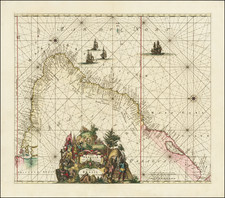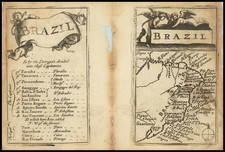Reiner & Josua Ottens state of Frederick De Wit's sea chart of Brazil, first issued in 1675.
De Wit's chart of the Brazilian coastline was one of the first sea charts to focus on the region. The map was produced shortly after the period where the Dutch controlled significant parts of the Brazilian coast and conducted extensive trade in the region, most notable in the north. Dutch Brazil was a colony of a Dutch Republic on the northeastern coast, controlled from 1630 to 1654 during Dutch colonization of the Americas. The main cities of the colony were the capital Mauritsstad (today part of Recife), Frederikstadt (João Pessoa), Nieuw Amsterdam (Natal), Saint Louis (São Luís), São Cristóvão, Fort Schoonenborch (Fortaleza), Sirinhaém, and Olinda.
Beginning in 1630, the Dutch conquered roughly half of the region which had previously been controlled by Portugal and The Dutch West India Company (GWC) set up a headquarters in Recife. The GWC governor, John Maurice of Nassau, brought artists and scientists to help promote Dutch Brazil and encourage immigration. Following the second Battle of Guararapes in 1649, the GWC began to lose its grip on the region and by January 1654, the Dutch had surrendered. While the Dutch demanded the restoration of its colonial interests, by August 1661, the area had been formally ceded to Portugal through the Treaty of The Hague.
The chart is embellished with an elaborate cartouche, 2 compass roses and 5 sailing vessels.
The Ottens brothers, Reiner and Joshua, operated a successful printing partnership in the mid-eighteenth century (fl. 1726-1765). They began the venture in 1726, publishing maps and other prints as “R & I Ottens.” They specialized in the reprinting of others’ work, especially Guillaume De L’Isle. In 1750, Reiner died; his soon, also Reiner, took his place, but the firm began listing their works as “Joshua & Reiner Ottens.” The firm lasted until Joshua’s death in 1765. Joshua’s widow, Johanna de Lindt, sold their remaining stock of plates in 1784.









